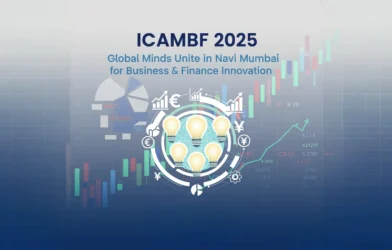Author: Aditya Pareek | EQMint | General News
In a move that could redefine the future of digital transactions, India is preparing to roll out biometric authentication for instant digital payments starting Wednesday, according to government and banking sources. The initiative aims to make digital payments faster, safer, and more inclusive by allowing users to authorize transactions using their fingerprint or facial recognition instead of traditional PINs or passwords.
The feature, to be integrated across major Unified Payments Interface (UPI) platforms, marks a major leap in India’s digital finance evolution. It is expected to enhance user convenience while significantly reducing fraud linked to stolen credentials or unauthorized access.
A Step Toward Next-Generation Payments
According to officials familiar with the development, the National Payments Corporation of India (NPCI), in collaboration with banks and fintech companies, has completed pilot testing of biometric-based UPI transactions. The rollout will begin with select users across major banks before expanding nationwide in the coming weeks.
The system will leverage Aadhaar-enabled biometric verification, ensuring that the authentication process is seamless and compliant with India’s data protection standards. This move comes at a time when UPI transactions have crossed a record 14 billion per month, highlighting the growing need for scalable, secure payment solutions.
“Biometric authentication is the next logical step in UPI’s journey,” a senior industry official said. “It simplifies digital payments for millions of users who may not be comfortable typing PINs while ensuring the highest level of security.”
How Biometric UPI Payments Will Work
Under the new system, users will be able to authorize payments directly through biometric input. For example, instead of entering a UPI PIN, a user can simply verify their identity using fingerprint sensors or facial scans via their smartphone or a biometric device linked to their account.
The feature will be especially beneficial for feature phone and rural users, where PIN entry can often be a challenge due to literacy barriers or device limitations. Integrating biometric technology ensures financial accessibility while maintaining compliance with the Reserve Bank of India’s (RBI) security frameworks.
Experts say that biometric payments will also help prevent one of the biggest risks in digital finance — social engineering scams — where fraudsters manipulate users into revealing their payment credentials. With biometric data, such breaches become significantly harder.
Enhancing Security and Trust
India’s UPI ecosystem has seen exponential growth since its launch in 2016, but the rapid expansion has also brought rising concerns about security and data privacy. The introduction of biometric authentication aims to strengthen trust in digital payments, particularly among first-time users.
According to cybersecurity analysts, biometric verification provides two key advantages — non-replicability and instant validation. Unlike passwords or OTPs, fingerprints and facial data cannot be easily copied or intercepted. Moreover, since the authentication happens on the device itself, it minimizes exposure to external threats.
The move aligns with India’s broader push toward digital sovereignty — reducing reliance on external authentication networks while improving domestic control over financial security infrastructure.
Boost for Financial Inclusion
The introduction of biometric UPI is not only a technological milestone but also a major step toward financial inclusion. For millions of citizens in rural and semi-urban areas, remembering complex passwords or handling smartphones with limited literacy remains a barrier to digital adoption.
With biometric-based authentication, payments become as simple as a touch or a glance, bringing more people into the formal digital economy. This simplicity could accelerate the adoption of UPI among older citizens and those in underserved regions.
Moreover, the integration with the Aadhaar infrastructure — which already covers over 1.3 billion people — ensures that the system can scale nationwide with minimal friction.
Industry Response and Future Outlook
The fintech industry has welcomed the move, calling it a “revolutionary step” that could redefine payment security standards globally. Several payment service providers, including leading banks and fintech startups, are already integrating biometric APIs into their apps to support the rollout.
“India’s payment landscape is already among the most advanced in the world,” said a senior executive from a leading UPI app. “With biometrics, we’re now setting the benchmark for what secure, inclusive, and frictionless payments should look like.”
Experts also believe this initiative could pave the way for cross-border biometric payments, enabling Indians abroad to authenticate remittances securely through global fintech platforms in the future.
Challenges and Safeguards
While the benefits are clear, experts caution that proper safeguards must be in place to ensure data protection and privacy compliance. The storage and verification of biometric data will be governed by India’s Digital Personal Data Protection Act (DPDPA), which mandates strict encryption and limited data sharing.
NPCI officials confirmed that biometric authentication will not store raw fingerprint or facial data. Instead, it will use encrypted templates stored securely within the device or banking network, ensuring that users’ personal information remains protected.
Additionally, banks and UPI providers will continue to offer multiple authentication options, including PIN and OTP, allowing users flexibility while adopting biometrics at their own pace.
Conclusion
The rollout of biometric authentication for instant digital payments marks a defining moment in India’s financial technology evolution. It strengthens the security, inclusivity, and efficiency of the UPI ecosystem — one that already leads the world in real-time payments volume.
By blending biometric precision with digital convenience, India is once again demonstrating how innovation can power inclusion. As the system expands nationwide, it promises to make every digital transaction not just faster, but safer — redefining how 1.4 billion Indians experience money in the digital age.
Disclaimer: This article is based on information available from public sources. It has not been reported by EQMint journalists. EQMint has compiled and presented the content for informational purposes only and does not guarantee its accuracy or completeness. Readers are advised to verify details independently before relying on them.









